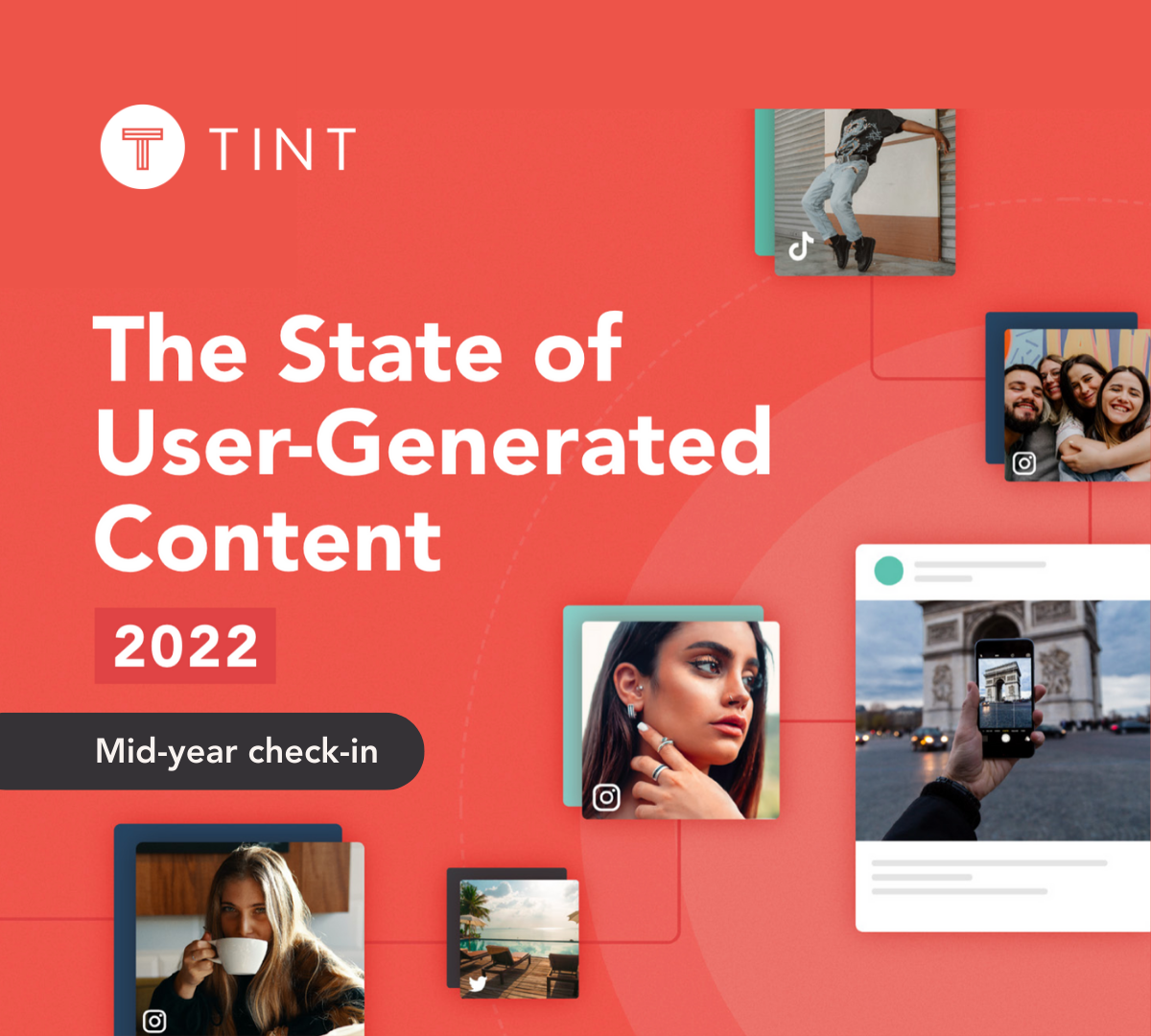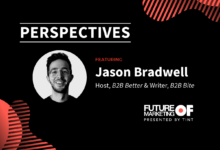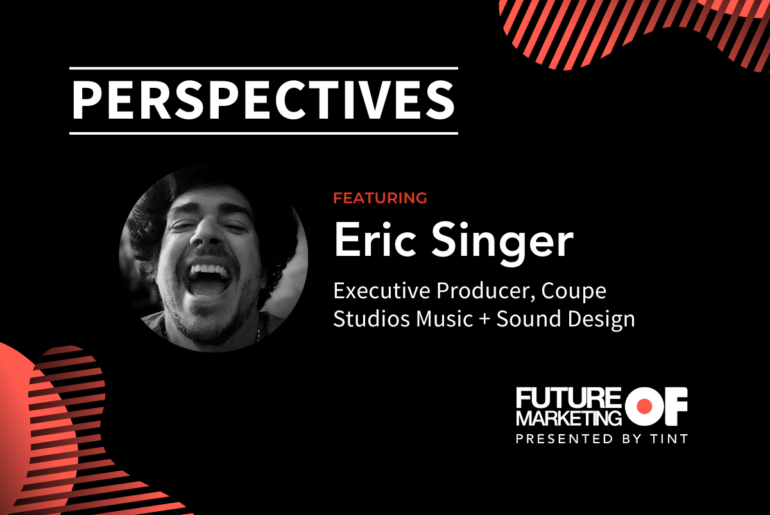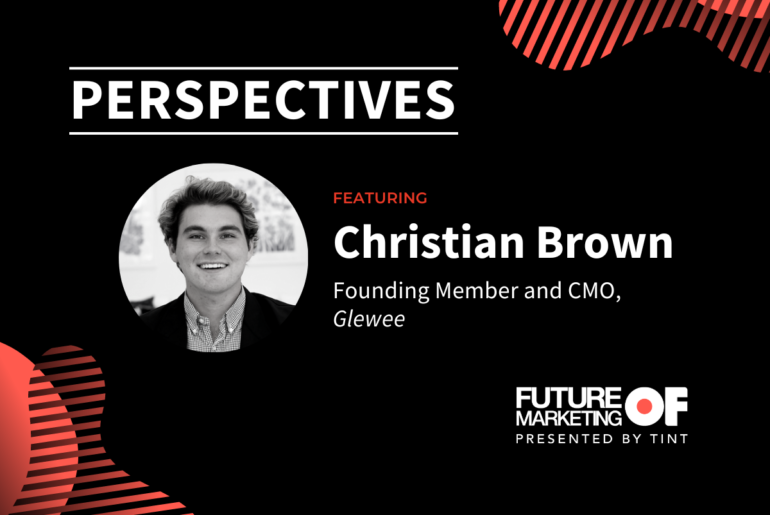In early 2022, TINT identified 5 consumer trends and 7 marketing themes in the annual State of User-Generated Content (UGC) Report. Since then, we are still facing a pandemic and economic uncertainty, mass layoffs are raising questions, elections and the holidays are inching closer – and consumer behaviors and marketing strategies are shifting (yet again). Regardless of the economic uncertainty, people are traveling, shopping in stores, and attending in-person events as we make up the time we lost in isolation.
On the marketing side, social media platforms are competing for market share as millennials and Gen Z flock to more generous algorithms and relatable content. Now, new trends are on the horizon, teams are working more with less, consumer expectations are more demanding than ever, and as for the future of marketing… well, we can only predict what will happen next.
Before we dive into the current – and future – state of marketing, let’s revisit the 5 consumer trends and 7 marketing themes we uncovered in early 2022:
Consumer trends
1. Prioritize Personalized Shopping Experiences
People want to see other people using a brand’s products or services – not stock photos. This can be achieved by learning from users and showcasing UGC to similar consumers.
The stats:
- 72% of consumers believe that reviews and testimonials submitted by customers are more credible than the brand talking about their products
- 77% of shoppers are more likely to buy from brands that personalize their shopping experience.
- 76% of consumers have purchased a product because of someone else’s recommendation before
2. Create Real Connections through User-Generated Content
Consumers want to engage and share content with brands they love – and with a little guidance, User Generated Content can play a major role in building relationships with your biggest fans.
The stats:
- 60% of people wish brands would tell them what type of content to create and share
- 73% of consumers wish brands would run more contests and giveaways
- 64% of consumers are more likely to share content about a brand if the brand they like is re-sharing content by customers
3. Showcase Priority on Diversity, Equity, and Inclusion
Consumers want to buy from brands that align with their values – and after the last two years, they now expect brands to speak up against social injustice. But where do we draw the line between brands speaking up for real change versus more clicks?
The stats:
- 65% of consumers agree that it’s important to them to see brands channeling diversity in their brand
- 6 in 10 marketers feel that their organization could do a better job at highlighting participation in social issues
4. Use Social Media to Spark Relationships
Consumers are 3x more likely to engage with a brand’s social media content than any other type of media they create – presenting more opportunities for brands to build relationships with their existing customers and target audience online.
The stats:
- 58% are more likely to engage with content on social media than on other channels
- 46.6% prefer social media over other channels for marketing communications
- 18-44-year-olds prefer social media for marketing communications; consumers over the age of 45 prefer email over social media and other channels.
5. The Rise of the Informed Consumer
Thanks to the internet, consumers are more informed than ever and can tell when they are being advertised to – pushing them to trust real customer reviews and testimonials over paid ads and branded content to sway their purchase decisions.
The stats:
- 78% of consumers can tell when a brand is advertising to them
- 75% of consumers are likely to search for reviews and testimonials before making a purchase
- 6 in 10 people feel indifferent or do not trust paid ads
Marketing themes
1. Engagement vs. ROI
Marketers in leadership are more likely to prioritize ROI; whereas, marketing practitioners are more likely to prioritize engagement – which can directly impact ROI.
The stats:
- 32.2% of marketers said engagement is most important in their role (leadership); 31% said return on investment (practicioners)
2. Team Growing Pains
As competition increases, marketing teams face the challenge to create and distribute content at a high frequency – with limited resources. This is followed by challenges in quality and engagement, which is a common theme across all marketing organizations.
The stats:
- 47% of marketers agree that it takes their team too long to create content
- 60% of marketers feel pressured to continually produce greater amounts of content at a high frequency
- 60% of marketers take the time to format content for all screen sizes and social media platforms
3. The Untapped Potential of User-Generated Content
People trust recommendations from people more than brands. However, only 41% of marketers regularly use UGC in their marketing – which means the remaining 59% are missing opportunities to boost trust, engagement, and conversions.
The stats:
- 70% of marketers agree that ratings and reviews are important for their organization
- 6 in 10 marketers feel that their audience engages more with UGC than branded content
- 61% of marketers plan to incorporate more user-generated content in 2022 and beyond
4. Employee-Generated Content Strengthens Recruiting and Employee Engagement
Employee-generated content (EGC) offers a unique way to improve recruiting and retention efforts – especially during a time when the majority of people reported being overworked and burned out.
The stats:
- 52% of communications and HR teams regularly use employee-generated content in communications channels
- Marketers are mostly re-sharing EGC on social media, ads or job postings, and recruitment events – in that order.
5. Effectively Embracing DEI
The past two years have been challenging, but they were also a reminder that we are all part of a global community. People are no longer afraid to ask their favorite brands to stand up for people of all backgrounds – and the brands that do have the potential to create real loyalty and relationships with their fans.
The stats:
- 63% of marketers plan to blend more community voice with their brand voice
- Consumers are 4-6x more likely to buy from and advocate for purpose-driven companies
- 6 in 10 marketers feel that their organization could do a better job at highlighting participation in social issues
- 71% of marketers plan to show more diversity, inclusivity, and accessibility in their content in the future
6. The Power of Visual Content
Consumers trust customer images more than stock photos and branded content. Additionally, visual content is extremely powerful and marketers are planning to experiment with new content and ad formats (like video).
The stats:
- 71% of marketers plan to increase efforts in video content in 2022
- 63% of consumers believe visual testimonials are more credible than written testimonials
- 72% of consumers trust images shared by customers more than stock photography
7. The Rise of Web 3.0 and the Metaverse(s)
Brands are officially experimenting with NFTs and the metaverse. However, most people still do not fully understand the metaverse – or what it will truly become.
The stats:
- 49% of marketers believe the metaverse will impact their brand and marketing strategies in 2022.
Here’s where we’re at now:
For the most part, consumer expectations have changed (and will continue to change) as we adopt new behaviors due to global circumstances. On the other hand, social media platforms – like TikTok and Instagram – are competing for market share and evolving at a pace that makes it difficult for marketers and consumers to keep up.
Add mass layoffs and budget cuts to the mix, and we have a recipe for an economic downturn that will likely affect businesses and people around the world (if it hasn’t already).
Marketers seem to understand what needs to be done – but limited resources, economic uncertainty, and high expectations from consumers and leadership teams make it challenging to keep up with the increasing demand for better user experiences, content, engagement, and ROI.
So… what now?
Emerging themes for the future:
Where there is challenge, there is opportunity.
History has shown us time and again that downturns tend to be short-lived and followed by long periods of expansion. The winners emerge during these challenging times are those that capitalize on the opportunities and acquire the right assets, customers, talent, and competencies at the right prices.
Harvard Business Review
In other words, expand as competitors cut back – and learn where the market is heading. Here’s what we predict will happen in the next few months:
1. Consumer spending will shift
- Consumer spending will focus on needs > wants as people anticipate more economic uncertainty
- This will push businesses to shift their messaging and offerings to appeal to this “new” mindset
- More focus on investments – from both, businesses and consumers
2. The rise of UGC Creators
- Faux UGC will blur the lines between genuine, authentic UGC and influencer marketing
- The average creator will increasingly demand compensation for their content as people grow savvier
3. More focus on distribution
- Marketers spend too much time creating content; not enough distributing it
- The 80/20 rule will go from creation/distribution to distribution/creation
- Roles that solely focus on content distribution will emerge
- More creative ad placement
4. Leaner (but more powerful) teams
- Mass layoffs and tight budgets will force teams to work with even more limited resources than during the early pandemic – when marketers were already reporting more responsibilities than before
- If companies do not invest in scaling their marketing teams, marketers will continue to burn out and the industry will experience high turnover, which leads to…
- More focus on mental health – internally and externally
5. Better, more hyper-personalized user experiences
- We’ll see more brands using user- and employee-generated content across marketing channels
- More AI and Machine Learning for product recommendations, shop the look, etc.
6. Video will reign supreme
- It’s no secret that video is the next big thing, but what will emerge after that?
- Video podcasts, more behind-the-scenes content, more YouTube and TikTok-like content.
7. Employees as influencers
- Heavy emphasis on retaining and recruiting top talent
- Employees as the “face(s)” of the brand
- New questions will emerge: How will this impact copyright laws? Who owns the content – the employee or the employer? Do employees get additional compensation? Where do we draw the line?
8. More ratings and reviews
- In today’s world, brands that don’t have ratings and reviews are missing a major opportunity to convert potential customers (and build trust with existing ones)
9. Social Commerce will go mainstream
- More sales optimization on social media channels
- Influencers as brand partners
- A rise in SMS and e-mail communication
- UGC will become more essential in marketing
- Frictionless experiences will win sales and loyalty
10. Overall, higher quality UGC!
- More editing features will fuel creativity
Want to keep a pulse on the future of marketing? Subscribe for exclusive content.





